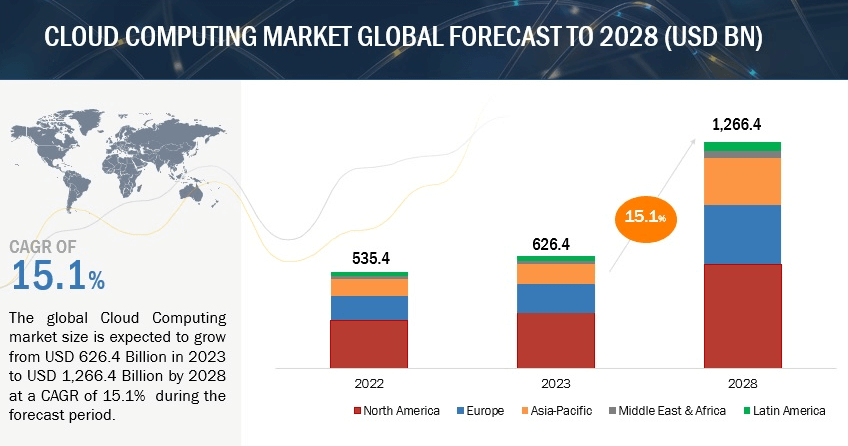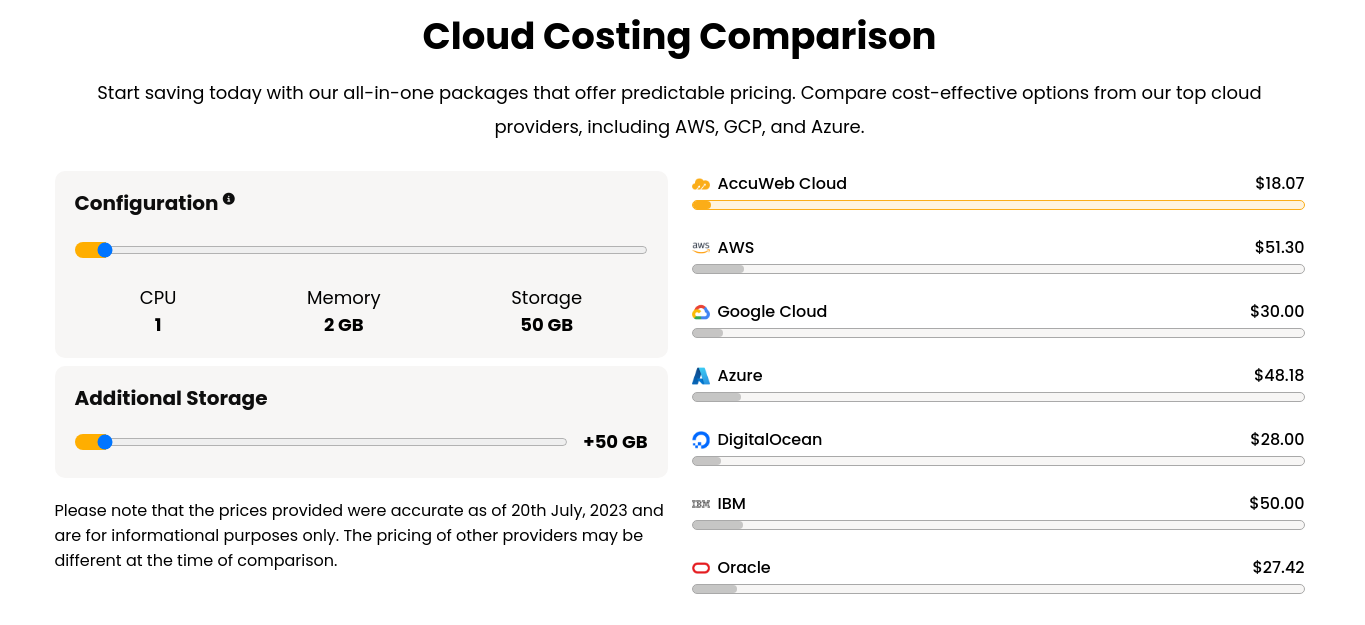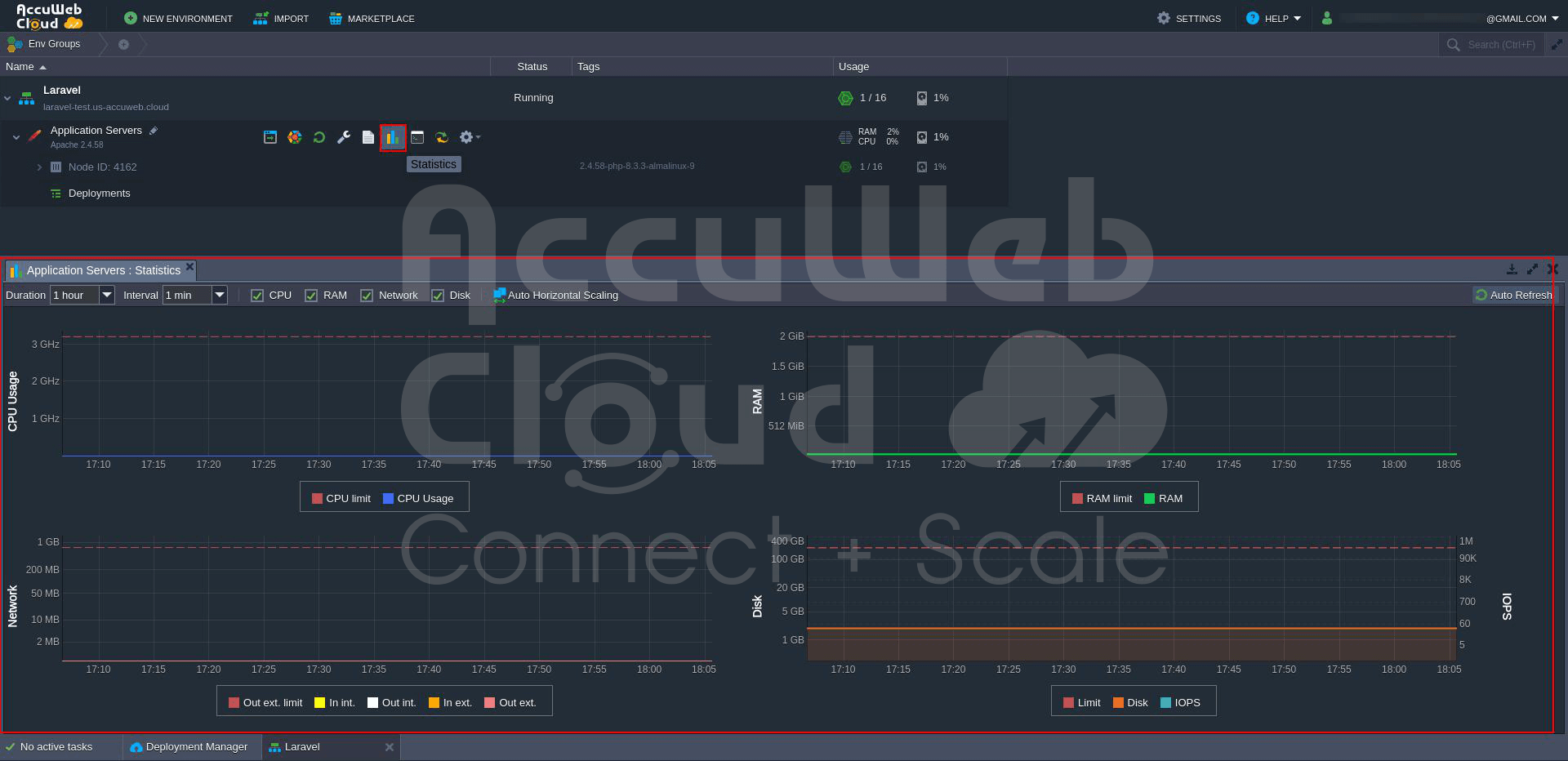Maximizing Cost Efficiency: 9 Ways Businesses Can Optimize Cloud Hosting Expenses
Cloud cost optimization techniques can help businesses save significant money on underutilized or overutilized resources.
Cloud computing is a boon for modern business, offering plenty of benefits such as scalability, speed, accessibility, and more.
However, if you don’t use cloud computing resources mindfully, it may result in unnecessary expenses.
You might end up buying redundant, obsolete, or unnecessary cloud services, products, and resources that don’t add value to your business.
This increases your overall cloud expenses and strains your budget.
According to a report, a lack of cloud optimization resulted in companies wasting 30% of their total cloud spend.
Know more about What is cloud Computing
Therefore, you need to understand and optimize your cloud costs if you want to streamline your budget and gain more benefits from cloud computing.
In this article, we’ll learn about cloud cost optimization, its benefits, and how to do it.
Let’s start!
What Is Cloud Cost Optimization?
Cloud cost optimization means reducing an organization’s cloud expenditure by implementing cost-effective strategies, cloud tools, and best practices.
This is done to get complete visibility into the organization’s cloud environment and ensure all your cloud resources are properly utilized, eliminating waste.
As a result, the organization can save big on its cloud bills while achieving scalability, flexibility, and performance. This will also help optimize the overall budget so that the organization can realize better ROI.
Why Is Cloud Cost Optimization Important?
With advancing technology and competition, organizations rely more on cloud infrastructure to achieve better scalability, accessibility, availability, and performance.
In 2023, the global market for cloud computing was valued at US$626.4 billion. It’s expected to reach US$1,266.4 billion by 2028.

This means they start investing in more cloud tools, which increases their cloud expenses. It may include some resource wastage as well if not monitored. Thus, cloud optimization will help you eliminate waste, ensuring resource efficiency.
Here are some of the benefits of optimizing cloud hosting costs : https://www.marketsandmarkets.com/Market-Reports/cloud-computing-market-234.html
Reduced Expenditure
Optimizing cloud hosting expenses helps you get an overview of your cloud expenses. Thus, you can understand what investments are paying off and the ones that are not. Thus, it will become easier for you to reduce or eliminate those resources and save money. Also, you can use this saved money on more profitable areas such as hiring, product development, etc.
Improved Resource Utilization
In the process of optimizing cloud costs, you will get a better insight into what cloud resources, products, and services you use and how much. Thus, you can make better utilization decisions, discarding underused resources and right-sizing overused ones. You will pay only for the resources you use, and not extra.
Fight Unpredictability
Sudden hikes in traffic can disrupt your operations and result in overutilization of resources. This, in turn, increases your cloud costs. You can use cloud cost optimization techniques like autoscaling to deal with this. This will distribute resources evenly, ensuring no room for overutilized or underutilized resources.
Thus, you can plan effectively for your budget and future-proof your business by taking charge of your cloud hosting expenses. This will not only help you save money but also give you a competitive advantage.
Cloud Cost Optimization Best Practices
Assess Your Cloud Spend
To perform cloud cost management effectively, assess your overall expenditure on your cloud infrastructure. Understand how many cloud services and products you use in your organization, how helpful they are, the money you invest in each one of them, their billing, cycles, and so on.
This analysis will help you understand where you are investing and how much. You will also figure out whether these investments are beneficial for your company.
If not, you can get rid of them and optimize your spending. Take into account the following items:
- Consider the managed cloud services you use, like databases, cloud hosting services, etc. The charges are usually on a per-use basis.
- Cloud computation costs include processing power charges based on the virtual machines you use. Pricing can vary according to the VM size and type, region, and number of spot instances.
- Cloud data storage costs include data transfer and retrieval fees, redundancy options, etc.
- Check your bandwidth costs for data flow in and out of your organization’s cloud environment.
- Assess additional cloud spend like premium support costs, products, reserved instances, security systems, etc.
After carefully looking at the above costs, find a way to optimize your expenditure by removing products and services or reducing accessibility to those you don’t require.
Aim for keeping cloud resources under your budget. For instance, if you are choosing a cloud provider, AccuWeb.Cloud is a great option. You will get transparent and cost-effective pricing, starting at just $18.07 for 1vCPU/50 GB SSD/2GB memory. This is much less than other providers. See the full comparison here.

Transparent Dealing
Always go for a cloud provider with a transparent pricing structure without hidden costs.
The reason is your cloud expenditure can significantly increase if you don’t pay attention to the cloud provider’s pricing structure and policies. If their pricing is complex and includes surprise bills, it can severely impact your budgeting plans.
For example, AWS has highly complex pricing with many tiers and services. Pricing might also vary with regions. So, it can become difficult as you grow. Compared to AccuWeb.Cloud, AWS pricing is $51.3, the highest.
So, when choosing a cloud provider, have an eye for clear, predictable pricing. Check the cost breakdown and decide whether it fits your budget. It will help you take charge of your investments and utilize resources thoughtfully.
Eliminate Wastage
You may have many cloud products, services, or resources you no longer need or use. Still, they have a place in your tech stack and cloud billing. So, it only makes sense to get rid of them and save your money.
Start by locating obsolete and redundant resources and get rid of them. You must also find underused resources that add no value to your business processes. For that, monitor your cloud resources and track usage and key metrics. Keep an eye on usage in terms of CPU, bandwidth, memory, and disk inputs and outputs.

- Remove idle or underused resources that you won’t require in the future
- Eliminate or downsize cloud instances with little to no activity in a given period
If you remove any cloud resources, ensure it does not affect your operations. If it does, find the solution or better alternative and eliminate it.
Right-Size Cloud Resources
To ensure you don’t overpay for the resources you don’t use, embrace the right-sizing technique. It means aligning your cloud resource needs with your spending.
You may have to increase or decrease the number or quantity of cloud resources you currently use to right-size your cloud resources. For example, with AccuWeb.cloud, you will pay only for the resources you use, which helps you scale up or down seamlessly. Our cloud pricing starts from $3/month for 512 MB memory, 600 MHz vCPU, 10 GB space, and 700 GB data transfers.
Here’s how to do that effectively:
- Identify your cloud usage patterns and the performance of cloud resources to make adjustments.
- Find the cloud instance type and size that best suits your needs.
- Evenly distribute workloads via load balancing to prevent resource waste.
- Keep repeating the above steps frequently to keep optimizing cloud costs.

Leverage Auto-Scaling
Scalability is one of the topmost virtues of cloud computation. Your requirements can vary from time to time, season to season, and sometimes unpredictably. Thus, your infrastructure must be ready to face any scenario.
Although you can scale your resources up or down manually according to your needs, it’s complex, time-intensive, and risky. This is where autoscaling cloud resources become helpful.
Autoscaling means adjusting computing resources dynamically based on usage. It benefits companies in dealing with sudden spikes in workloads, ensuring you use the required cloud resources at the right time. This prevents unnecessary idle time or over-usage scenarios.
Use Suitable Storage
Businesses can have different data storage needs based on size and data types. Therefore, you must choose a suitable storage solution to optimize costs while ensuring high performance.
Storage solutions are commonly of two types:
- Object storage is suitable for storing unstructured data in large amounts and is cost-effective. Use it for backups and storing data that is vital but you rarely use.
- Block storage is better for storing structured and transaction data types. Use this if your workload is high with lots of operations. It’s costlier than object storage but offers better performance and speed.
Discover AccuWeb.Cloud’s Object Storage
In addition to choosing the correct data storage solution, review your data storage periodically. Clean unnecessary and obsolete data, offering no business value.
Use Spot Instances
Spot or reserved instances are resources you can avail yourself of for a particular duration from your cloud provider at a discounted price. However, the cloud provider might reclaim it after the term. On the bright side, these will help you save significant money.
So, if you use these instances for less-critical workloads, you don’t have to buy on-demand instances for each workload. The best way to go about managing the process is by:
- Using spot instances for flexible, less critical workloads such as stateless apps, testing and development, etc.
- Using on-demand instances for mission-critical workloads such as dynamic apps like analytics-based apps, transactional apps, etc.
- Connecting spot instances to load balancers will distribute the workload evenly.
- Determining the best reservation options or spot instances based on usage patterns.
- Checking spot instance costs periodically will inform you of fluctuations so that you can buy the one that offers the best value for money.
- In case the cloud provider reclaims the spot instance, you must have on-demand instances to switch to quickly, ensuring no downtimes occur.
Implementing a mixed strategy with both on-demand and spot instances can help a business optimize its cloud costs while achieving performance.
Continuous Monitoring
Even after implementing the above cloud cost optimization strategies, you must continuously monitor your cloud usage to save costs. This is an ongoing process, so keep doing it periodically.
Get real-time analytics and keep an eye on trends to identify usage patterns. If you find some inefficiencies like:
- Underutilized cloud instances
- unnecessary data or storage space
- idle resources
Understand how you know about detailed cloud pricing in AccuWeb.Cloud’s dashboard.
Eliminate them to save cloud costs. You can also turn on instances when not in use. In addition, technology is advancing, so find better alternatives in terms of cost and performance and switch to them.
Bonus Point
No matter what type of business you operate under, implement cloud cost optimization everywhere in your organization. Optimize the use of cloud services, products, and resources in different departments, such as software development, HR, finance, marketing, legal, and so on.
For example, if you apply cloud cost optimization in software development, do it at each step, from planning, development, and testing to deployment, maintenance, and upgrades.
Real-life Examples
A Startup Looking to Optimize Cloud Spend
Startups often have limited budgets and need to maximize the value they get from their cloud spending.
By optimizing the cloud usage with AccuWeb.Cloud, the start-up we helped was able to reduce costs significantly. They instead used that savings to invest more in product development, marketing, or hiring additional talent.
An Enterprises Wanting the Best Bang on Their Bucks
A large enterprise came to us with complex IT infrastructures. With AccuWeb.Cloud, they optimized their cloud costs by analyzing their usage patterns, rightsizing resources, implementing reserved instances., As a result, they saved millions of dollars in cloud spending annually.
An E-commerce Platform with Growing Needs
Online retailers experience fluctuating traffic throughout the year, with peaks during holiday seasons or sales events.
Using AccuWeb.Cloud, an e-commerce platform leveraged auto-scaling features and optimized its infrastructure for peak efficiency. Thus, they could easily handle sudden spikes in traffic without overspending.
Let’s look at how others do cloud cost optimization.
Netflix
To optimize cloud hosting expenses, Netflix implements a mixed approach. It utilizes on-demand and spot instances to manage its workloads. It also leverages auto-scaling to meet changing user demands.
Slack
Slack utilizes savings plans and reserved instances to optimize cloud expenses. It also cleats up and eliminates unused resources automatically, which further saves costs. In addition, Slack keeps on optimizing and right-sizing its storage space.
Employing containerization via Kubernetes for some workloads helps Pinterest achieve better resource utilization. It also enables them to manage their computing resources effectively and save costs.
Furthermore, the company leverages serverless technology, paying only for the resources it uses.
Conclusion
Optimizing cloud hosting expenses has become important for modern businesses relying heavily on cloud resources, products, and services. If you want to streamline your overall budget, consider the above strategies.
Take time to effectively understand your cloud hosting usage and right-size the resources to save big. Also, choose a reliable cloud provider that offers reasonable and transparent pricing to meet your business needs.
FAQs
1. What is a cloud cost optimization framework?
The cloud cost optimization framework is an approach that helps businesses reduce their expenditure by managing expenses, commitments, and usage. It gives you multiple opportunities to cut off extra costs while managing all other expenses effectively.
2. How can organizations monitor and control cloud hosting costs easily?
To monitor and control your cloud hosting expenses effectively, you can:
- Use cloud cost management solutions to identify different costs.
- Use alerts to let stakeholders know about cost overruns
- Set up budgets to identify extra expenses
- Perform cost optimization reviews to track improvement opportunities
- Introduce governance frameworks to take cost-saving measures
- Conduct an awareness program to learn cloud cost optimization techniques
3. How does cloud architecture impact cost efficiency?
cloud architecture offers scalability to meet changing needs, real-time availability, speed, and performance. All are necessary for optimizing cloud costs.

Jilesh Patadiya, the visionary Founder and Chief Technology Officer (CTO) behind AccuWeb.Cloud. Founder & CTO at AccuWebHosting.com. He shares his web hosting insights on the AccuWeb.Cloud blog. He mostly writes on the latest web hosting trends, WordPress, storage technologies, and Windows and Linux hosting platforms.




